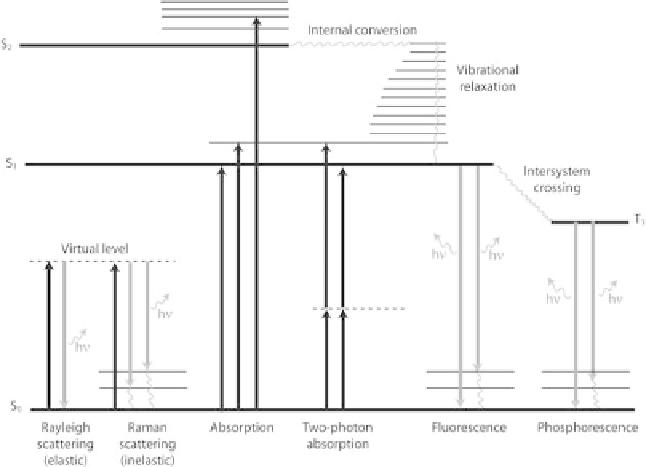Biomedical Engineering Reference
In-Depth Information
Three processes that do not involve the emission of new photons can occur,
collectively called non-radiative decay: vibrational relaxation, which is energy
tranfer through collisions with the surrounding material, intersystem crossing,
which is a transition between two different spin-states, and internal conversion,
a transition between two energy states with the same spin angular momentum.
Emission of photons can be summarized in two processes: fluorescence, which
is the emission from singlet-excited states and phosphorescence, the emission
from triplet-excited states; see Figure 12.3. Scattering is the redirection of a
photon after interaction with matter. In elastic or Rayleigh scattering, there
is no energy exchange between photon and molecule and the scattered photon
has the same wavelength as the incident photon. In inelastic or Raman scat-
tering, energy transfer occurs, and the scattered photon has a different energy
than the incident photon. Rayleigh scattering is dominant in tissue.
The above-described processes are captured in the light propagation model
through the absorption coecient
a
[cm
1
] and scattering coecient
s
[cm
1
], dened by:
a
= C
a
a
;
s
= C
s
s
; (12.1)
where C
a;s
[cm
3
] are the concentrations of absorbers and scatterers in the
medium, and
a;s
[cm
2
] are the absorption and scattering cross section, re-
spectively. Their reciprocal values represent the average attenuation length:
FIGURE 12.3: Jablonski diagram illustrating possible interactions of light
with matter. S0, S1 and S2 are the ground, first and singlet electronic states,
T1 is the first triplet state. (From [33].)








Search WWH ::

Custom Search